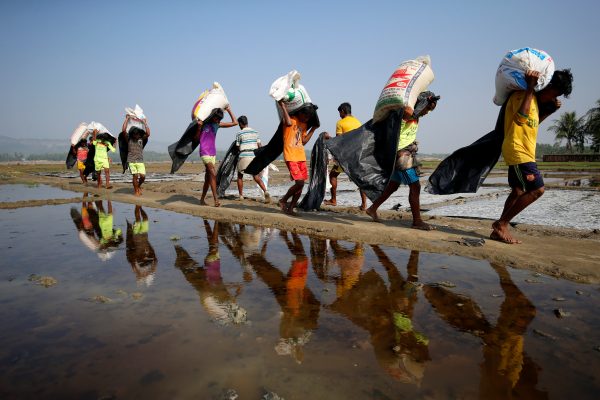It also helps to explain the so-called ‘Rohingya problem’ on which so much has been written in recent times. So how did the idea of taingyintha become politically salient? And what is its relationship to state formation and national identity?
To answer these questions requires a little bit of digging into the recent past. As a term, taingyintha has neither a long nor glorious history. It was not a significant idea in colonial-era politics, where it seems to have been a signifier of ‘native’ identity. At the end of World War II, taingyintha featured in negotiations on the country’s draft constitution, which was ratified in 1947, but it got only two modest references in the chapter on citizenship, where it is translated as ‘indigenous races’. It wasn’t mentioned in the 1947 Panglong Agreement, which is mythologised as laying the foundations for national unity, and it remained peripheral to politics in the country prior to a military coup in 1962.
But on 12 February 1964, taingyintha went from having limited political salience to becoming a centrepiece in the project for military-dominated statehood. The junta leader, General Ne Win, used the Union Day address to urge ‘national races’ to come together for the good of the nation. In so doing, he inaugurated a new programme of action based on a state-sponsored conception of taingyintha as political community. Within the same year, the government had set up an Academy for the Development of National Races. The following year, staff from universities around the country began state-directed fieldwork to document and publish authoritative studies on national races’ culture.
Although Ne Win’s one-party state collapsed under the weight of nationwide protests in 1988, the idea of national races not only prevailed, but also emerged stronger than ever. A newly comprised military junta that seized control of government announced that ‘non-disintegration of national [taingyintha] solidarity’ was the second of its three main causes. For want of any other unifying motif, national races were invoked on every broadcast and publication, and at every major event.
The new military junta used the term to mean different things. On the one hand, ‘national races’ was used to describe the members of a single political community, united in struggle against common enemies inside and out. On the other, it was used to denote people living in remote parts of the country who had failed to progress due to civil war and ignorance. Between them, these usages worked to justify relentless military campaigns against armed groups operating under the banners of multitudinous national races.
Today, Myanmar’s 2008 constitution cements national races in the country’s formal institutions. It establishes a conceptual relation between taingyintha and citizenship, such that the former is irreducible to the latter. Legally and by definition, national races trump citizenship. To talk of the political community ‘Myanmar’ is to talk of taingyintha, and to talk to that community is above all to address its members not as citizens but as national races.
Because taingyintha identity had trumped citizenship, the place of people belonging to groups not recognised as national races, like people identifying or identified as Rohingya, is precarious. The only means available for the Rohingya and other excluded groups to achieve any political recognition within Myanmar is to submit to the politics of domination and insist that they too are taingyintha.
This means that Rohingya advocates must also engage with and support the idea of national races. That is, they must reproduce the idea in order to make a claim for political identity and membership. They must give assurances that if included in the schema of national races, they would be committed to the idea of taingyintha; that, ironically, they would be the most vociferous defenders of ‘national race’ identity.
Myanmar’s problem is not a ‘Rohingya problem’, but a ‘national races’ problem. The idea of taingyintha obligates groups wanting political recognition — like the Rohingya — to acquiesce to its terms as the price demanded for admission to the ‘Myanmar’ political community, only to expose them to the ire of the members of other groups already recognised as national races.
Nick Cheesman is a Fellow at the Department of Political and Social Change, The Australian National University. He is currently a member of the Institute for Advanced Study, Princeton.
A longer version of this article appeared here on New Mandala. This was adapted from the recently published How in Myanmar ‘National Races’ Came to Surpass Citizenship and Exclude Rohingya (Journal of Contemporary Asia, 2017).


Thanks for a perspective on the challenges Myanmar faces that has not been so clearly articulated before in the EAF. What a no win proposition this is: the Rohingya have to acquiese to the majority’s notion of a ‘national race.’ But in doing this they sacrifice their own identity and invite the scorn of those in power.